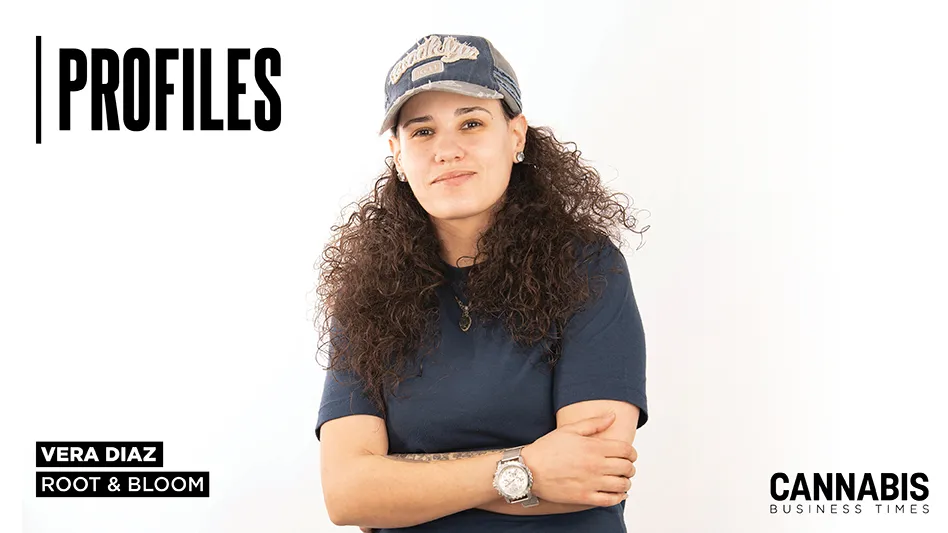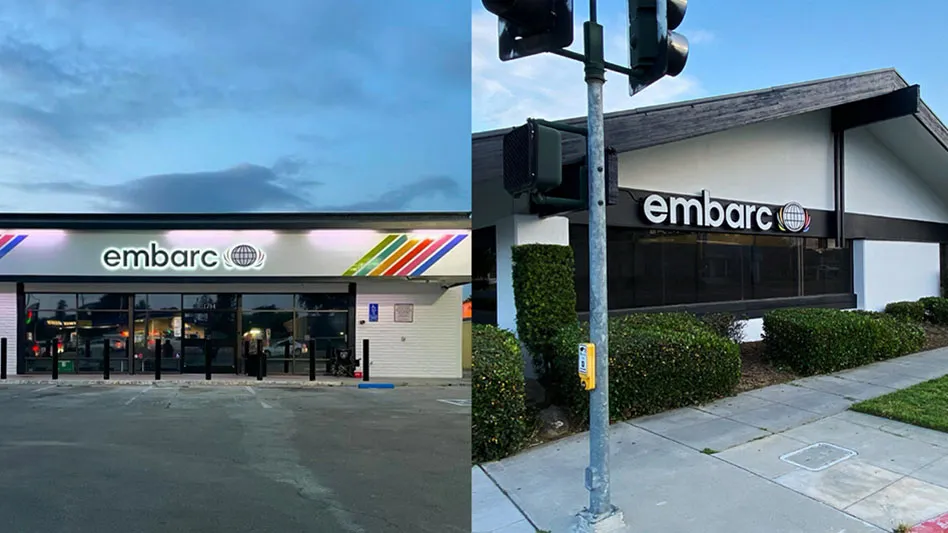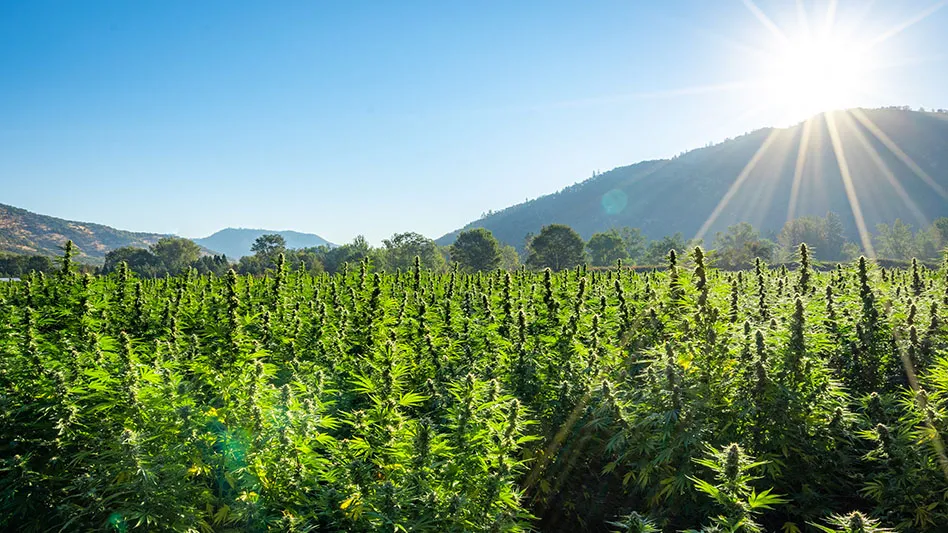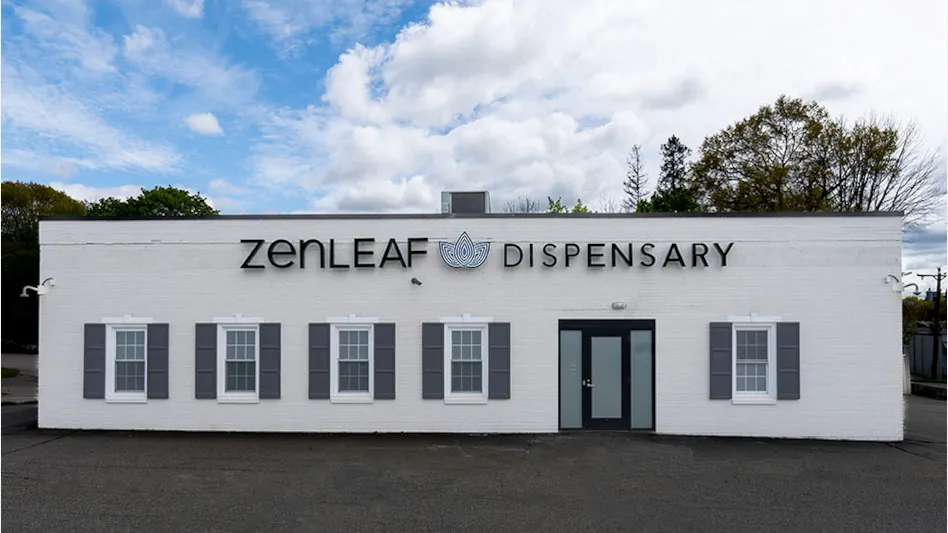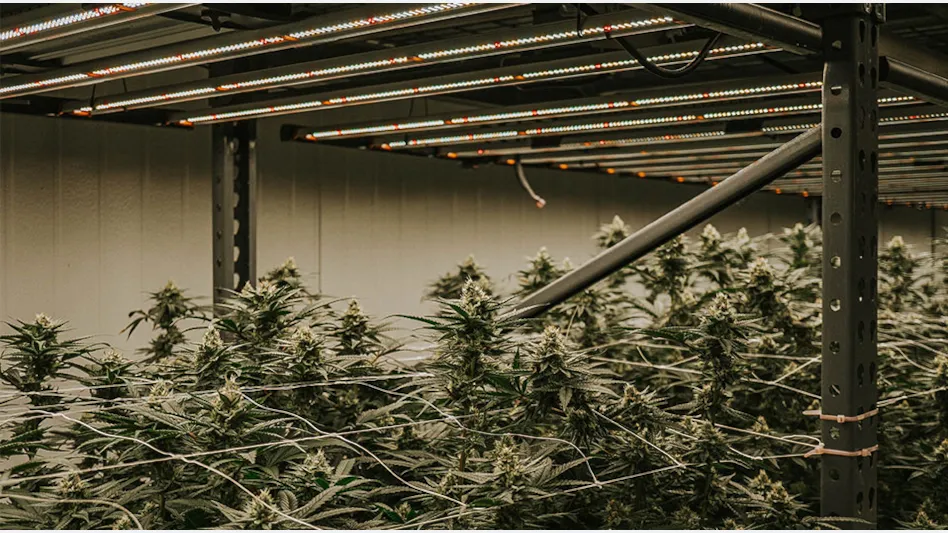
Photo courtesy of Resource Innovation Institute
In the pursuit of higher potency, increased yields and superior quality, cannabis cultivators are harnessing cutting-edge lighting technologies and innovative fertigation methods. Balancing the costs of those and other inputs with efficiency and understanding where there are diminishing returns is crucial.
By fine-tuning and balancing these fundamental cultivation aspects, growers can maximize efficiency, enhance crop consistency, and fortify their competitive edge in the market.
Lighting & Nutrients: A N ot-S o-L inear R elationship
Cannabis growers making the switch from high-pressure sodium (HPS) fixtures to high-efficiency light-emitting diodes (LEDs) or who are adopting new nutrient regimens
While the reciprocal relationship between light intensity and nutrient delivery generally is linear, there exists a point of diminishing returns with both. “We want growers to be the most nutrient use efficient, so we need to figure out where [lighting and nutrient inputs] begin to plateau,” says Craig Yendrek, a Resource Innovation Institute
“We see growers saying they're successful at really high EC levels with their nutrient solution, and we’re not doubting that they are, but at a certain point you're just flushing nutrients down the drain (if you're using drain-to-waste systems),” Yendrek
In its cannabis crop studies, Hawthorne tested the same nutrient ratios at different concentrations measured by electrical conductivity (EC). By applying the same nutrient ratio at ECs of 1.5, 2.0, 2.5, 3.0, and 3.5
Light shares a similar response curve to nutrients. While standard HPS fixtures reach a photosynthetic photon flux density (PPFD) of up to 900 on the plant canopy before negatively impacting crop development and environmental balances, most LEDs can reach 1,200 PPFD, with some reaching as high as 1,500 PPFD or more, before seeing diminishing returns or drawbacks. Some genetics may thrive at those higher intensities, but others may have challenges maintaining a healthy growth rate at higher light levels.
“Light energy is the catalyst for photosynthesis, and photosynthesis along with certain hormones will create the efficiency of the development,”
E nvironmental P arameters to Consider
To get the most out of higher light and nutrient doses, cannabis growers need to complete a comprehensive review of environmental controls and settings. Transpiration rates go up as light intensities increase, meaning HVAC systems will need to be
Similarly, irrigation events may need to be altered when using higher nutrient concentrations, as well as lighting and CO2 concentrations (more on CO2 later). “Lighting, temperature, humidity, carbon dioxide assimilation, those are the four main atmospheric properties that affect plant growth and photosynthesis,” Rivero
In addition to improving facility efficiency and efficacy, adopting new technologies and adjusting nutrient recipes to maximize crop yields can also lead to qualitative changes. For example, cannabis flowers can have increased trichome density, or flowers may have more or less purple or pink hues as growers increase lighting intensities and/or nutrient concentrations. That said, it’s important to note that not all genetics will thrive in these souped-up environments.
“I used to have a Panama Red and that thing did great outdoors,” Rivero
A one-size-fits-all approach is “one of the bigger mistakes that a lot of cultivators are making” when trying to optimize systems for both efficiency and production, Yendrek says. Having the same light levels, nutrient recipes, irrigation and dryback schedules, and other environmental conditions is “going to work for a lot of strains, but it's not going to work for every strain.”
Optimization Notes
Cannabis growers experimenting with lighting intensities and nutrient recipes can use carbon dioxide (CO2) supplementation to support the photosynthetic process. “As you increase that light, you also need to increase that carbon dioxide to actually process more nutrients, to have a healthier root system that is uptaking the nutrients,” Rivero says. “The more light we give the plant, the more the plant requires out of the environment, out of you as the cultivator, out of the whole process, in order to maximize what you're doing with that light.”
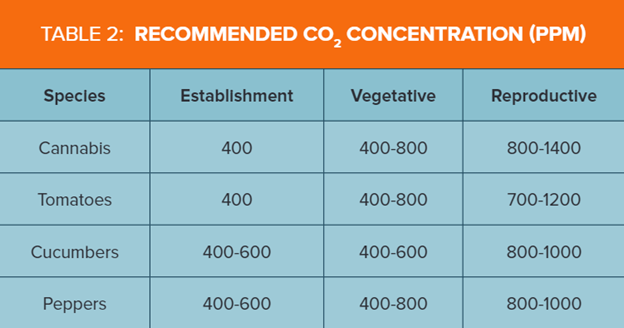
Baseline recommendations for CO2 concentrations for various crops. Source:
Cannabis growers also
Other efficiencies can be found in late flowering. “Once you get into late bloom, if you do it right, there's not a whole lot of vegetative growth happening anymore,” Yendrek continues. This means growers can start to dial back light intensities, CO2 concentrations, and feeding events. “They still need to grow and develop and get those flowers to mature, so I'm not suggesting that you cut the flowering time down, [rather] that the conditions that the plants are growing in probably could be adjusted to save on resources.”
As with any other system adjustments, growers should record a baseline of their current systems before they start experimenting on a small scale. When experimenting, growers should only change one variable at a time and record everything. “Even the things that you might not need right now, it might become relevant later,”
Optimizing cannabis production can be an arduous process that occurs over years but developing a deeper understanding of genetics and how they react under different environments can offer growers a competitive edge while establishing the cannabis industry as a resource-efficiency leader in the broader controlled environment agriculture landscape.
Robert Eddy, M.S., is Resource Efficiency Horticulturist at Resource Innovation Institute.
Latest from Cannabis Business Times
- Green Thumb Reports $276M Revenue for 1st Quarter 2024
- Colorado Legislature Gives Final Approval to Measure Aimed at Streamlining Marijuana Regulations
- South Dakota Group Submits 29K Signatures for 2024 Adult-Use Cannabis Legalization Measure
- Rescheduling Would Have Saved Verano $80M in 2023 Tax Payments, CEO Says
- Aurora Marks 1st Medical Cannabis Shipment to New Zealand Market
- Where All 100 US Senators Stand on SAFER Banking Act
- Blumenauer Unveils Legislative Blueprint, Additional Administrative Action Needed Following Rescheduling
- Cannabis Rescheduling FAQ: What Now?
